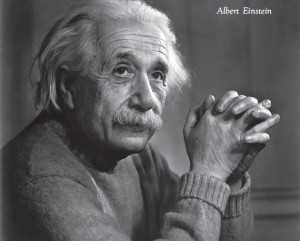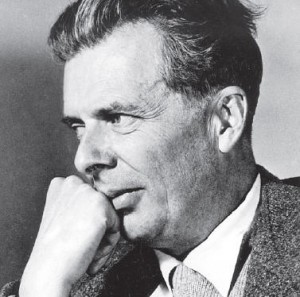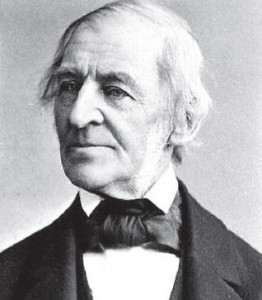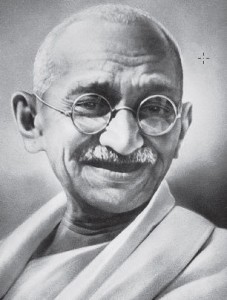Einstein, Emerson, Thoreau, Huxley, Hesse . . . I was amazed that this list an intellectual who’s who from recent world history was actually a list of thinkers who had appreciated the Gita.
As I had been born and brought up in India, the place where the Gita was spoken millennia ago, I was familiar with it as an ancient Hindu text. I had even memorized some of it for verse recitation contests. But I had no idea that its contents were of interest to the modern mind, much less praised by some of the greatest modern minds.
Reading such appreciations of the Gita motivated me to study the text seriously. After reading several Gita commentaries, by well-known spiritual teachers, I came across the rendition of the Gita that I found most relevant: the Bhagavad-gita As It Is, by Srila Prabhupada, the founder-acarya of ISKCON. Studying that text in the association of Krishna devotees initiated for me an intellectual adventure that continues till this day. That adventure has involved studying the commentaries of many illustrious saintly teachers from the past, discussing the Gita with contemporary devotee-scholars, memorizing and relishing its verses, and choosing to dedicate my life to sharing Gita wisdom. All this intellectual engagement with the Gita has helped me understand it better. It has also helped me better understand just how much there is still to understand in it.
Now, with the holistic understanding of the Gita that the bhakti tradition provides, when I look back at those appreciations of scholars and intellectuals, I can see how they help elucidate the glory of Gita wisdom.
Insights on Essential Questions

“When I read the Bhagavad-gita and reflect about how God created this universe, everything else seems so superfluous.” – Albert Einstein, Noble Laureate German Scientist
We live amidst a degree of information overload that makes us susceptible to a particular sort of intellectual malfunction an inability to contemplate life’s essential questions. Through newspapers, TV, and the Internet, data on hundreds of subjects from hundreds of sources swamps us daily. Much of this information is irrelevant to our core concerns; knowledge about the favorite food of a popular actor, and similar information, makes no difference to our lives in any practical sense.
The Bhagavad-gita (13.12) leaves just this sort of intellectual superficiality far behind by explicitly declaring that spiritual knowledge is the most important among all branches of knowledge. Significantly, it doesn’t let spiritual knowledge remain in the realm of remote abstraction. It brings that knowledge to bear on issues that lie at the heart of our existential dilemma: who we are, what our role in the world is, and how we can find real happiness. Gita wisdom underscores the fact that we are not just physical bodies but spiritual beings. Our purpose is to harmonize ourselves with the underlying order that pervades the universe, which can be achieved by learning to love the Supreme Being, Krishna, who can grant us supreme fulfillment.
The Gita’s sophisticated theistic framework, as evident, for example, in its delineation (Gita 9.510) of Krishna’s relationship with the world, provides us with the exciting possibility to reconcile age-old conflicts between science and religion. The mainstream scientific worldview implies that the cosmos functions as an impersonal mechanism, governed by universal and immutable laws. Conventional religion implies that such laws can be superseded by a personal God who bestows grace and intervenes in the lives of His worshipers for their greater benefit.
In this conflict, those who side with science usually have to settle for some kind of deism. But this reduces God to a mere first cause, a passive observer unable to intervene in the world He set in motion, on behalf of His devotees or a otherwise a notion unacceptable to the religious mind nourished by God’s independent desire to be merciful. Those who side with religion frequently have to settle for a God who arbitrarily works miracles a notion unpalatable to the scientific mind that thrives on the sort of orderliness that characterizes the universe.
How does the Gita help resolve this conflict?
By outlining a profound theistic framework wherein God, Krishna, plays a fascinating double-role. It presents a multi-level conception of God as both a neutral overseer (Paramatma) and a reciprocal giver and receiver of love (Bhagavan). The understanding of God as a neutral overseer provides room for the universe to function as a mechanism governed by natural laws. The simultaneous parallel understanding of God as a reciprocal giver and receiver of love provides room for divine intervention.
No doubt, the conflict is philosophically complex and the two level conception of God is theologically intricate. So, this article won’t give a comprehensive presentation of either; it intends rather to serve as an introduction to the impressive scope and depth of Gita wisdom. This same principle applies to the other complex issues addressed in the remaining sections.
Systematic Guidance for Spiritual Evolution

“The Bhagavad-gita is the most systematic statement of spiritual evolution of endowing value to mankind. It is one of the most clear and comprehensive summaries of perennial philosophy ever revealed; hence its enduring value is subject not only to India but to all of humanity.” Aldous Huxley, English writer
Perennial philosophy centers on two vital principles: understanding philo the perennial, the function of the head; and loving the perennial, the function of the heart. Gita wisdom boosts both the head and the heart in their voyage towards the eternal.
For the head, the Gita explains that reality comprises three levels: the arena of material forms, which is temporary; the arena of formlessness that lies at the threshold of eternity; and the arena of spiritual forms that lies at the heart of life in eternal reality. We can visualize these three levels in a graphical representation of reality as a continuum along the y-axis. The lower, negative side of the axis represents material reality. The upper, positive side refers to spiritual reality. And the zero point refers to the transition where matter ends and spirit begins. These three levels can also be alternatively referred to as material personal, impersonal, and spiritual personal or trans-personal.
Thus the Gita provides an inclusive framework for contextualizing and integrating notions of reality that have emerged in various traditions throughout the world. Its nonsectarian understanding of the Absolute Truth is evident in its declaration that Krishna is the father of not just all human beings but of all living beings. (14.4) The same universal spirit is manifest in the Gita’s declaration (10.8) that Krishna is the source of everything.
For the heart, the Gita offers a positive role for emotions: they can be reinvented as roads to spiritual perception instead of being rejected as roadblocks in spiritual life. It first underscores that material emotions act as roadblocks because they distort our vision, making worldly things seem desirable when they are in fact the source of suffering. So it repeatedly (Gita 2.38, 9.28, 12.19, for example) urges us to evolve spiritually and grow beyond the grip of our emotions.
But the Gita wisdom refuses to let the material realm have a monopoly on emotions. It indicates that spiritual emotions emotions of the soul for Krishna, and of the soul through Krishna for other souls are our original, natural emotions of which material emotions are pale shadows. The Gita (15.19) declares that the ultimate spiritual reality is personal and lovable, and can be approached with devotional affection. (10.10 bhajatam pritipurvakam) Thus it celebrates spiritual emotions as roads to reality. In fact, it deems love for Krishna to be the pinnacle of reality, life’s crowning achievement. (4.10)
Overall, the Gita presents spiritual perfection not as oneness or as an emotionally barren void, but as an emotionally fertile arena of endless love shared between Krishna and all living beings.
East-West Theistic Synthesis
“The Bhagavad-gita is an empire of thought and in its philosophical teachings Krishna has all the attributes of the fullfledged monotheistic deity and at the same time the attributes of the Upanisadic absolute.” Ralph Waldo Emerson, American philosopher

The Western conception of a personal God is emotionally appealing but intellectually unappealing. The Eastern conception of an impersonal absolute is just the opposite intellectually appealing but emotionally unappealing. The Gita’s revelation of God as Krishna is both intellectually and emotionally appealing. Here’s why.
Emotionally, the idea of a personal God who protects and guides us appeals to our innate need for relationships and reciprocation. Without them, existence becomes an emotional wasteland. Yet most notions of a personal God in the Western theistic traditions can’t survive serious intellectual scrutiny.
Intellectuals like to go beyond appearance to substance, to the first principle, to the root cause of all things. So they often consider anything that has form and personality to be superficial and external. They feel impelled to go beyond to some deeper underlying universal truth. Thus, for example, the notion of God as an old man with a long beard who sends thunderbolts to cast the sinful into the fires of hell for eternal damnation strikes rational people as primitive and parochial.
To those who wish to go beyond appearance to substance, the Gita offers an arena of non-differentiated oneness known as Brahman, the impersonal conception of the Absolute. But it also urges such intellectually minded seekers to probe deeper and recognize transcendental individuality and variety within spiritual homogeneity. The Gita indicates that the transcendental person, Krishna, resides in His full glory beyond the Brahman effulgence (Gita 4.27). He is the support of Brahman and is the ultimate spiritual reality. In the supreme spiritual arena, He eternally reciprocates love with all those who choose to love Him. This vision of the supreme spiritual arena as a world of endless love is eminently emotionally fulfilling.
Thus by revealing a personal absolute who exists beyond all the sectarian categories that characterize the world of matter categories that intellectuals wish to transcend the Gita offers an understanding of God that is a synthesis of East and West and that appeals both emotionally and intellectually.
The Blossoming of Philosophy into Religion
“The marvel of the Bhagavad-gita is its truly beautiful revelation of life’s wisdom which enables philosophy to blossom into religion.” The bane of most modern philosophy is its divorce from any transformational methodology for experiential verification. Most modern philosophers, no matter how brilliant, reign largely in the arena of armchair speculation. Philosophy divorced from transformational methodology loses its social relevance and becomes the shrunken domain of ivory tower intellectuals who agonize over semantics. In popular culture, philosophy is superseded by pop psychology, wherein self-help platitudes gain center-stage and wisdom is recast in soothing sound bites. People futilely turn to self-help without looking for the self.
Gita wisdom shows us the way out of this plight. It couples philosophy and religion into an integrated whole that serves as a potent tool for self-transformation and God realization. The Bhagavad-gita (9.2) indicates that it offers the king of all knowledge (raja-vidya) that can be verified by direct personal experience (pratyaksavagamam). Thus the Gita’s approach to exploring reality is bold, inviting, and scientific. It presents theoretical propositions about the nature of reality we are souls who have an eternal loving relationship with the all-attractive Supreme, Krishna. And for personal verification of its theory it presents the experimental methodology centered on the yoga of love, bhakti-yoga.
The Gita’s philosophy, far from being a matter of armchair speculation, focuses on the issue closest to our hearts love. Gita wisdom explains how life’s driving force is existence’s crowning reality the love that activates us in our daily life when purified and re-directed towards Krishna becomes the supreme reality, to which even the Supreme submits in His world of endless love.
And the Gita’s religion is far removed from conventional religions that ask followers to pray, pay, and obey. It invites devotee-seekers to analyze, utilize, and actualize its wisdom through personal practice practice that Krishna rewards proportionally with divine revelation, as indicated in the Gita (4.11) Thus, the philosophy of love blossoms into a religion of love, wherein all our daily activities, whether religious or secular, become integrated into a magnificent master plan. This plan aims for our purification and restoration in the eternal world of love to which we actually belong and for which we subconsciously long.
Comprehension through Spiritual Tuning
“In order to approach a creation as sublime as the Bhagavad-gita with full understanding it is necessary to attune our soul to it.” Rudolph Steiner, Austrian social reformer
The Bhagavad-gita indicates that its mystery is revealed to those who have tuned their hearts with the Absolute through devotion. (4.3) What the Gita offers is not just a different worldview for intellectual titillation but a different world to view for emotional transformation. A blind person can speculate endlessly about the nature of an elephant, but such speculation can never provide the understanding available through surgical restoration of vision. Analogously, the Gita indicates that those who are stuck at the material level due to their attachments are blind to spiritual reality. (Gita 5.1011) Those who break free from the fetter of matter by diligent practice of yoga and raise their consciousness to the spiritual level become healed of this blindness; they perceive spiritual truth with the eyes of knowledge (jnanacaksu). The most complete spiritual cognition comes, as the Gita (11.5354) indicates, to those who cultivate a heart of devotion.
This devotional tuning characterized the words, the actions, indeed the life of Srila Prabhupada. When George Harrison asked him how one could recognize an authentic teacher of the Gita, Srila Prabhupada replied in essence that the Gita was a call to love Krishna, so an authentic proponent of the Gita had to be a lover of Krishna.
Through his personal example and his philosophical exposition, Srila Prabhupada unleashed the supremely transformational power of divine love. He thus opened for millions worldwide the door to not just intellectual comprehension of Gita wisdom but also to devotional realization of Krishna’s love. By this appealing spiritual egalitarianism, he “transformed hippies into happies,” changing aimless people with self defeating habits into purposeful and joyful devotees of Krishna dedicated to the service of humanity.
Hope amidst Hopelessness

“When doubts haunt me, when disappointments stare me in the face, and I see not one ray of hope on the horizon, I turn to Bhagavad-gita and find a verse to comfort me; and I immediately begin to smile in the midst of overwhelming sorrow. Those who meditate on the Gita will derive fresh joy and new meanings from it every day.” Mahatma Gandhi
Life is a battle, filled with regular obstacles and occasional reversals. Maintaining our morale amidst these stresses and distresses is often difficult, sometimes impossible. When we become demoralized, we lose the battle before we begin to fight, for we lose the will to fight at all.
We can best preserve the will to fight by linking ourselves with a transcendent reality that is forever secure, far beyond the threats and tribulations of material existence. Gita wisdom reveals that world to be Krishna’s world of love. The link to that world is loving remembrance of Krishna, remembrance especially of how He tirelessly prepares the way for us to reach that world, no matter what may be the hazards along the way.
Gita wisdom solaced and strengthened Arjuna in his worst crisis, when in the face of the most important battle of his life, his emotions went on over-drive and dragged him into an abyss of confusion and dejection. Meditation on the Gita’s verses has the power to heal and thrill, as testified by one of its first conveyors, Sanjaya. (18.7677)
The Gita’s potential to empower beckons each one of us. By contemplating its wisdom, we can guide our thoughts beyond the immediate to the ultimate, beyond the circumstantial to the eternal, beyond matter to Krishna. Thus, we can find the supreme shelter, the supreme strength, the supreme satisfaction. That is the Gita’s greatest gift and life’s ultimate achievement.
Caitanya Carana Dasa is the associate-editor of Back to Godhead (US and Indian editions). To subscribe for his daily Bhagavad-gita reflections, please subscribe for Gitadaily on his website, thespiritualscientist.com.
